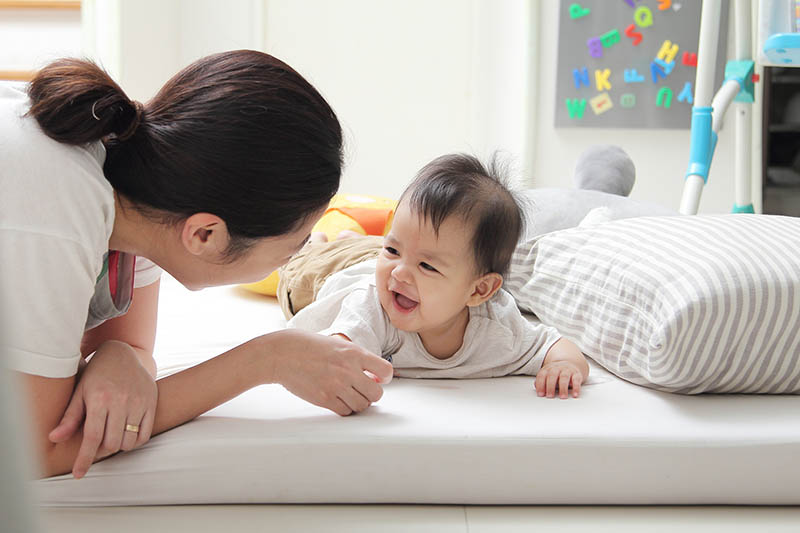Families For Life | Baby Behaviour: A Guide

As babies become more aware of the world around them, baby behaviour changes. As babies get better at communicating their needs, it also gets easier to work out what baby behaviour means.
How baby behaviour and awareness are related
Your baby’s early experiences and relationships stimulate her brain, shaping the way she sees and responds to the world. As your baby’s awareness of the world expands through these experiences, she develops and learns, and you’ll see lots of changes in her behaviour.
Your baby’s relationship with you is the main way she learns about the world and how to respond to it. For example, your baby soon learns to tell you apart from everybody else. She might even recognise her name, or her face in the mirror. Once she understands you’re a separate person, she might fear that you’ll leave and not come back, which is why some babies develop separation anxiety
You may also understand more about your baby and the things she does. For example, you might be able to work out the difference between how she behaves when she’s hungry, and what she does when she’s sleepy.
What makes your baby happy
Your baby will develop strong attachments to people and things. For example, she might love one toy much more than all the others.
Your baby is also learning who the important people in her world are. They’re the people who make her feel loved, safe and secure, so she prefers to be with those people. She’ll definitely prefer one person to everyone else, almost certainly you or another primary caregiver.
So, playing with her favourite toys and being with her favourite people makes your baby happy. She’ll smile, make happy noises and might even wave or clap her hands when she sees you.
What makes your baby anxious
Instead of being afraid of everything, your baby might become afraid of specific things. As she learns what to expect of life, the unexpected might really upset her.
Your baby might sometimes be scared when important people – usually mum or dad – go away. She’ll let you know, probably by crying. She might also get anxious or upset when she’s with people who aren’t important or familiar to her or when unfamiliar people talk to her. This fear of strangers is a normal part of child development.
What interests your baby
Your baby will want to use things the ‘right’ way, and will start experimenting with objects to see what they’re for. This might involve dropping your phone in the cat’s water dish or tipping the food bowl onto the rug. Everything will probably seem to end up in your baby’s mouth too, because this is how she likes to explore objects.
At 6-12 months, your baby starts to understand cause and effect and begins to have some control over her behaviour. This is a good time to start setting gentle limits to form the basis of teaching your child positive behaviour in the future. For example, if your baby gets too close to the oven, you can say, ‘No, the oven is hot’. Then pick her up and move her to a safe area.
Your baby doesn’t understand danger, so it’s important to create a safe home environment for her, especially when she starts moving. For example, it might be best to use a gate or some other way of keeping your baby out of the kitchen and away from hot cooking surfaces.
Your baby will probably do things just to see how you react. You can smile and use a happy tone if your baby is behaving in a way that you like. Even if your baby is behaving in a way that you don’t like or that isn’t safe, it’s still important to respond calmly. This helps your baby feel safe.
© raisingchildren.net.au, translated and adapted with permission
Explore more